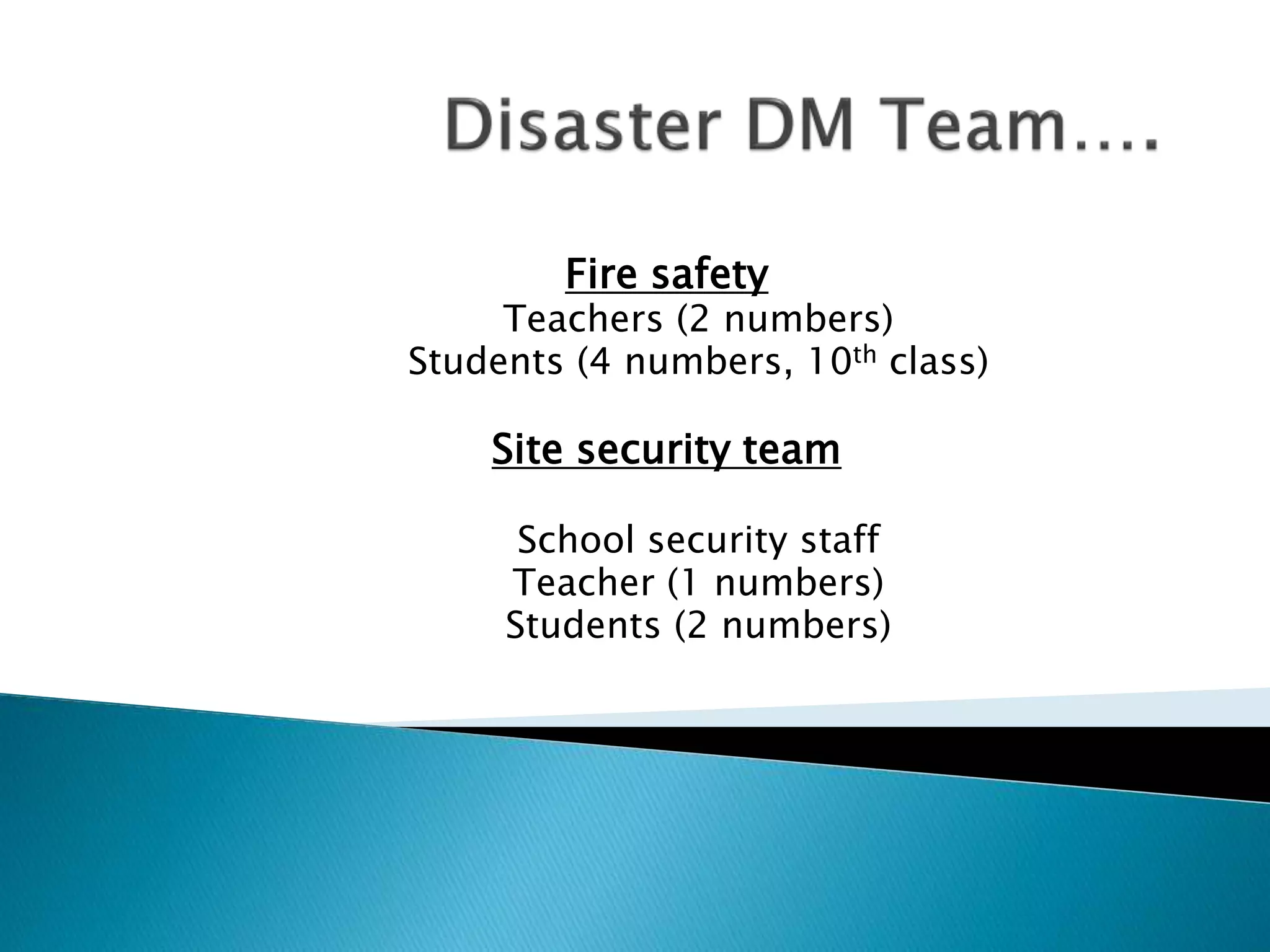The document provides information about disaster management in education from a national perspective in India. It discusses several major disasters that have impacted India, why disaster management is important, and vulnerabilities in the country. 57% of land is earthquake-prone, 12% flood-prone, and 85% vulnerable to natural hazards. The document outlines the seismic zones in India and discusses past disasters that have impacted schools, killing thousands of students. It emphasizes implementing disaster management plans, safety measures, and mock drills in schools to protect children.













































































































